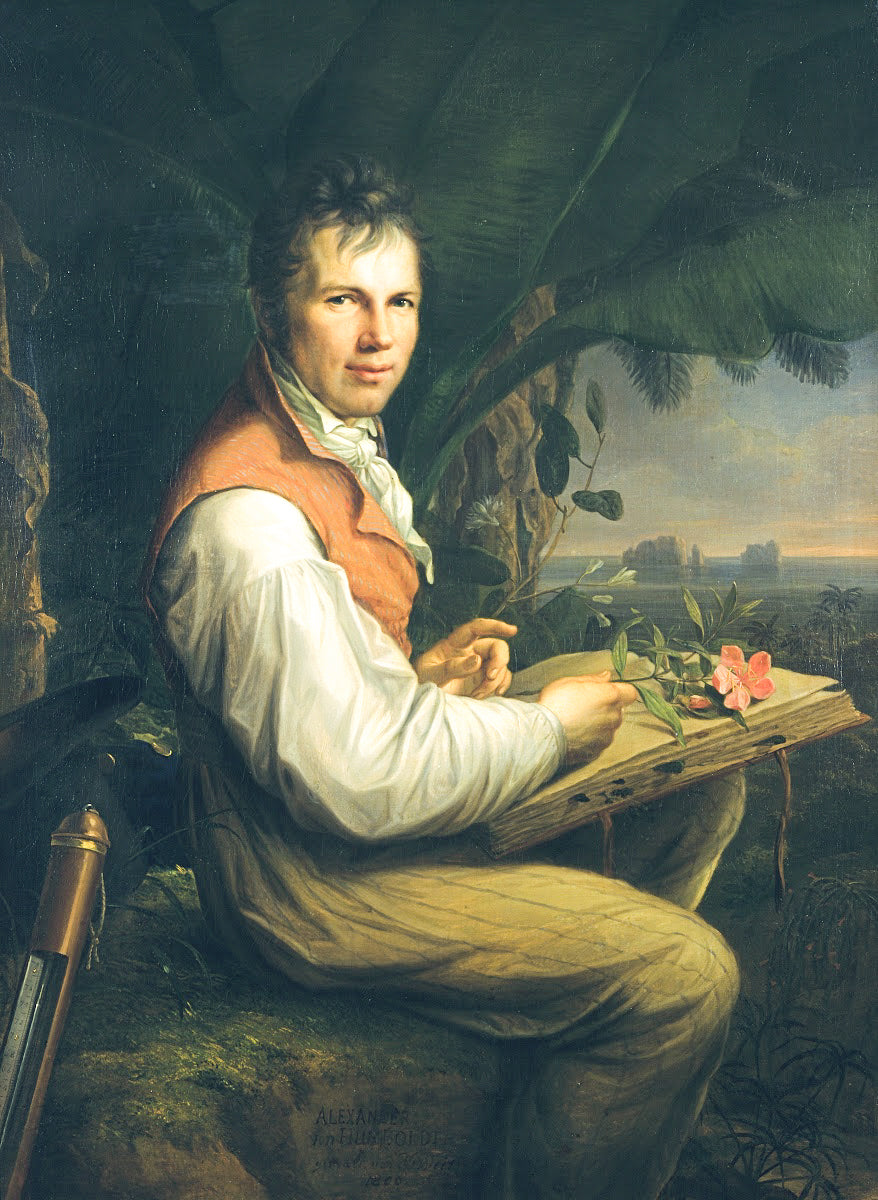
Alexander von Humboldt
Alexander von Humboldt: His indefatigable quest for knowledge reshaped the way we perceive our world. He meticulously documented flora and fauna to unveil the intricate web of climate and geography, Humboldt's interdisciplinary approach paved the path for modern scientific inquiry.
Venturing into the lush and uncharted landscapes of South America during his renowned expedition from 1799 to 1804, Humboldt meticulously cataloged and classified an astonishing array of plant species. His ability to discern ecological patterns, document floral diversity, and discern geographical distributions was nothing short of extraordinary.

Artist: Friedrich Georg Weitsch | Painting depicts Alexander Von Humboldt and botanical artist Aimée Bonpland at Mount Chimborazo, Ecuador.

Within the pages of 'Plantes Équinoxiales' Humboldt not only presented a trove of new plant species to the scientific community but also introduced the concept of elevational zonation—a pivotal revelation that remains fundamental in modern ecology. His rigorous methodology and botanical insights were a testament to the rigorous pursuit of knowledge.
Below are excerpts from 1808 Plantes Équinoxiales. Illustrations by Humboldt's colleague, botanical artist, Aimée Bonpland. Sourced from BIBLIOTECA DIGITAL.

Among the various works which Mr. Bonpland and I thought it necessary to undertake during our journey to the equator, botanical research was among those which we carried out.
Occupied with the most assiduity. Both imbued with the same zeal for the study of plants, animated by the appearance of vegetation as rich as it is majestic, our attention has been constantly directed towards the progress of botany. If our predilection for this science has often engaged us in the most painful excursions
and the most dangerous for our health, it is also which has become for us an inexhaustible source of enjoyment and compensation. Wandering in the solitude of the woods, deprived of the charms of social life, the physicist would have difficulty sustaining such perfect isolation, I dare say such a long exile, if the ground did not present him.
At every step there is an interesting and varied picture of plant forms. The trip to the tropic, which we carried out for five years, took us to countries, a large part of which had never been visited by other botanists. The unfortunate Loefling perished as a victim of his zeal for the sciences, having only reached as far as the mouths of the Orinoco; the illustrious Jacquin was only able to travel the coasts of Venezuela and Cartagena. More favored by destiny than these famous botanists, whose work served as a model for us, we penetrated into the
interior of South America, from the coast of Caracas to the borders of Brazil or the government of Grand Para.


